Introducing Traditional Handmade Okinawan Pottery Used at ESTINATE HOTEL NAHA
ESTINATE HOTEL NAHA uses pottery made by Tsuboya Pottery Ikutouen, which is renowned for its craftsmanship and long history. We visited the shops in the area and the workshop where they make the pottery used at our hotel to learn more about the process of making these exquisite products.
Click the button below to book your stay at ESTINATE HOTEL NAHA.
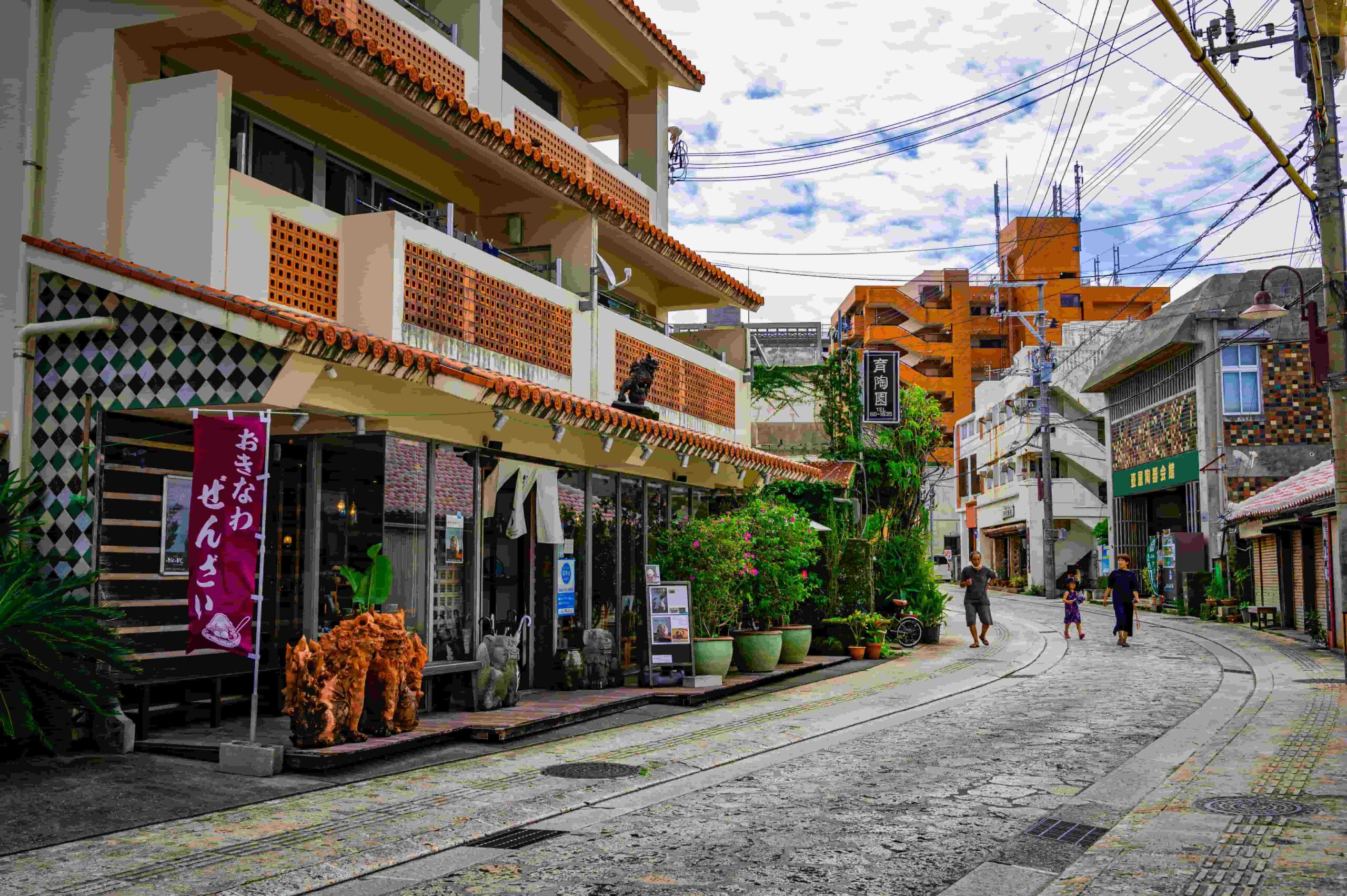
First, we visited the main shop on Yachimun-dori. The company has multiple shops located within walking distance.
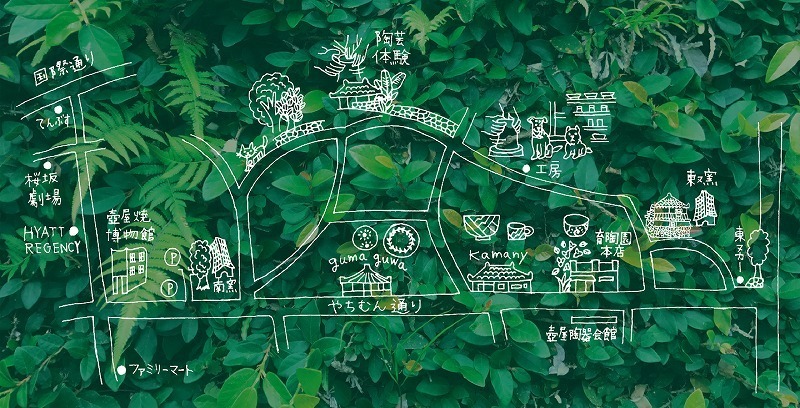
Inside the spacious main store, you can find a variety of pottery in many different styles as well as Ryukyu glass. There are also beautifully handcrafted shisa on sale. The pottery used at our hotel can be found here.
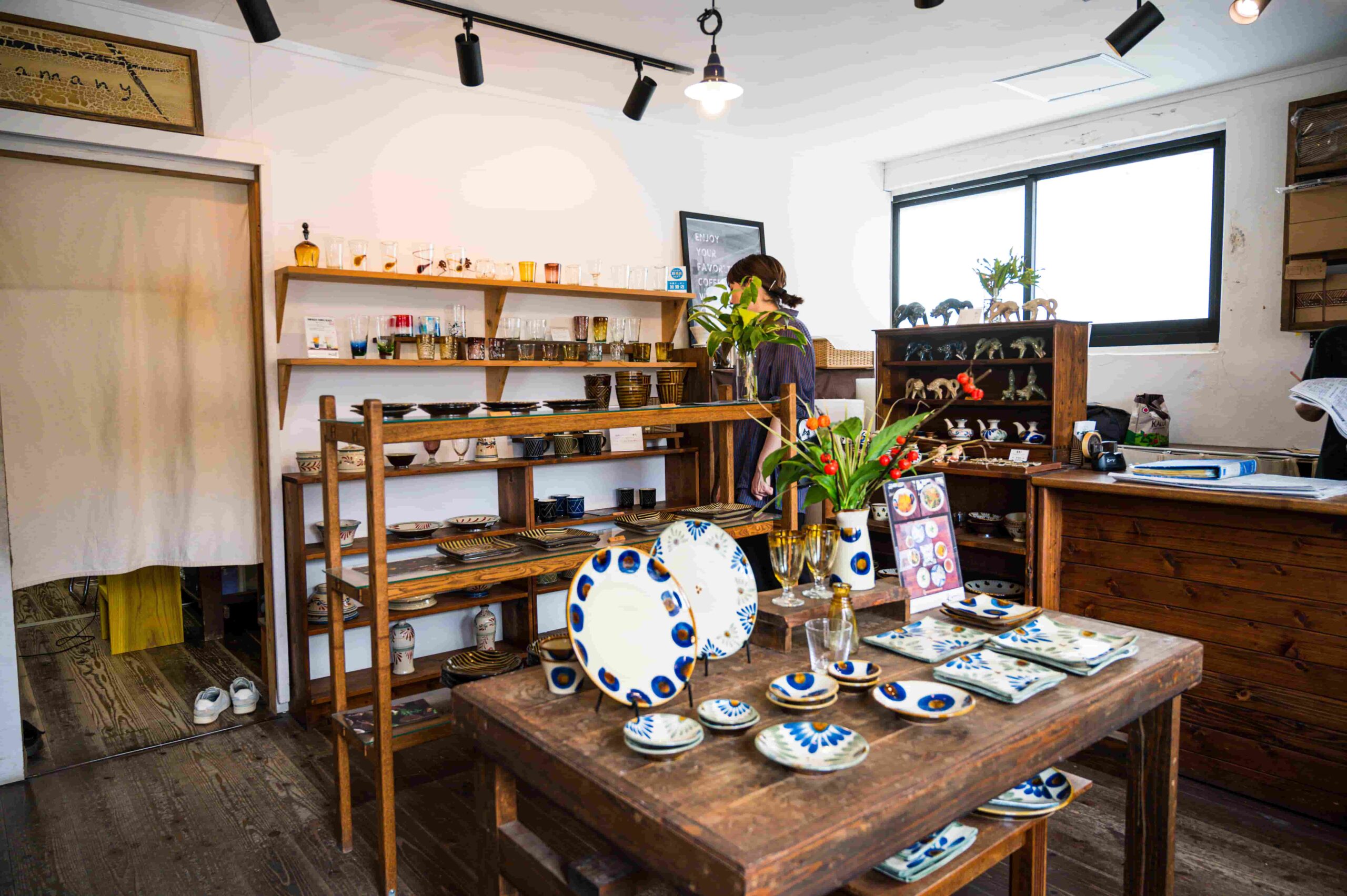
After visiting the main store, we headed to Etha, a quaint cafe featuring Ikutouen’s handcrafted tableware. It’s a great spot for an afternoon tea in between strolling around Yachimun-dori.
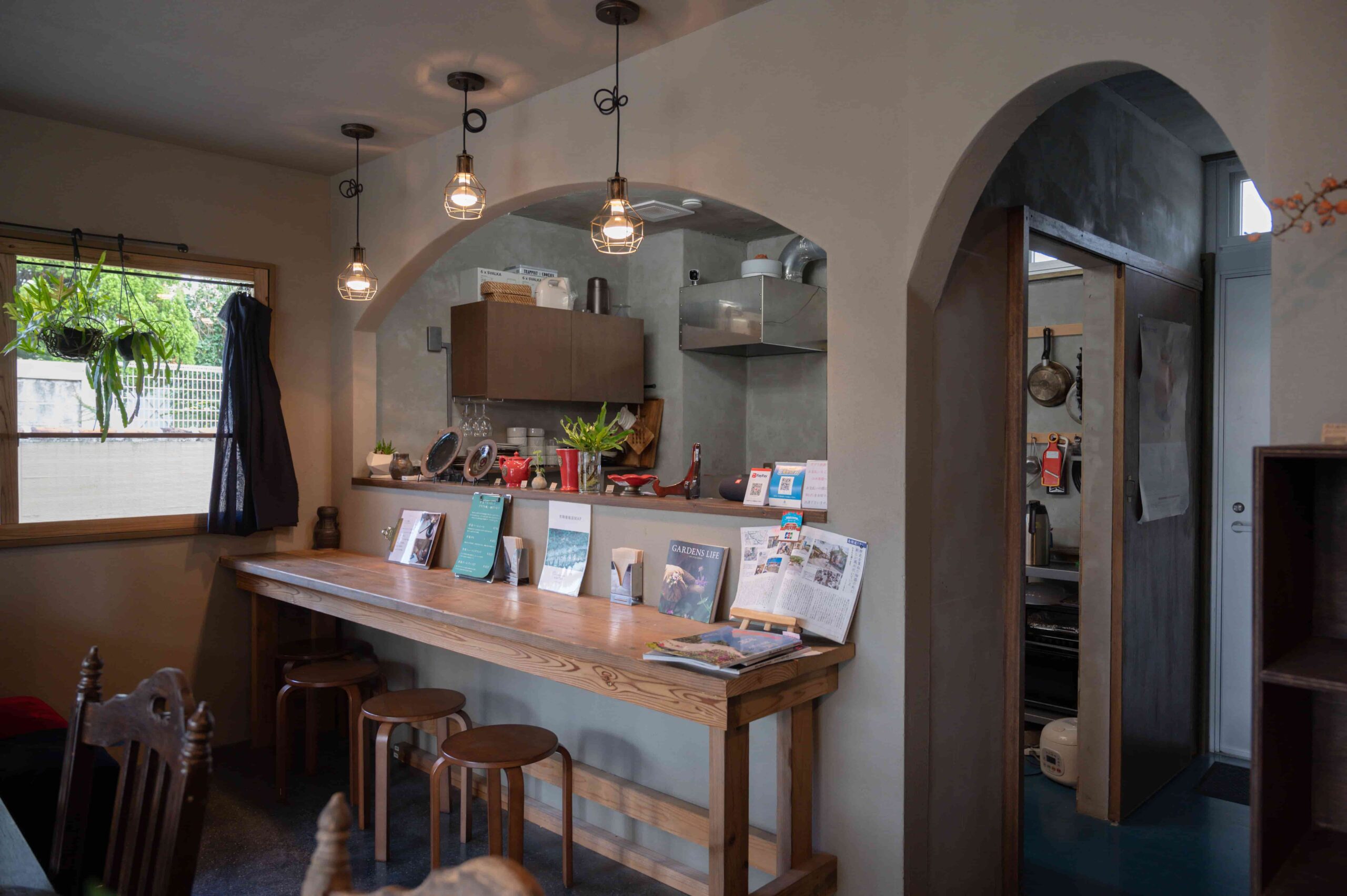
Then we headed to nan*ne, a cafe and shop selling handcrafted goods from around Japan.
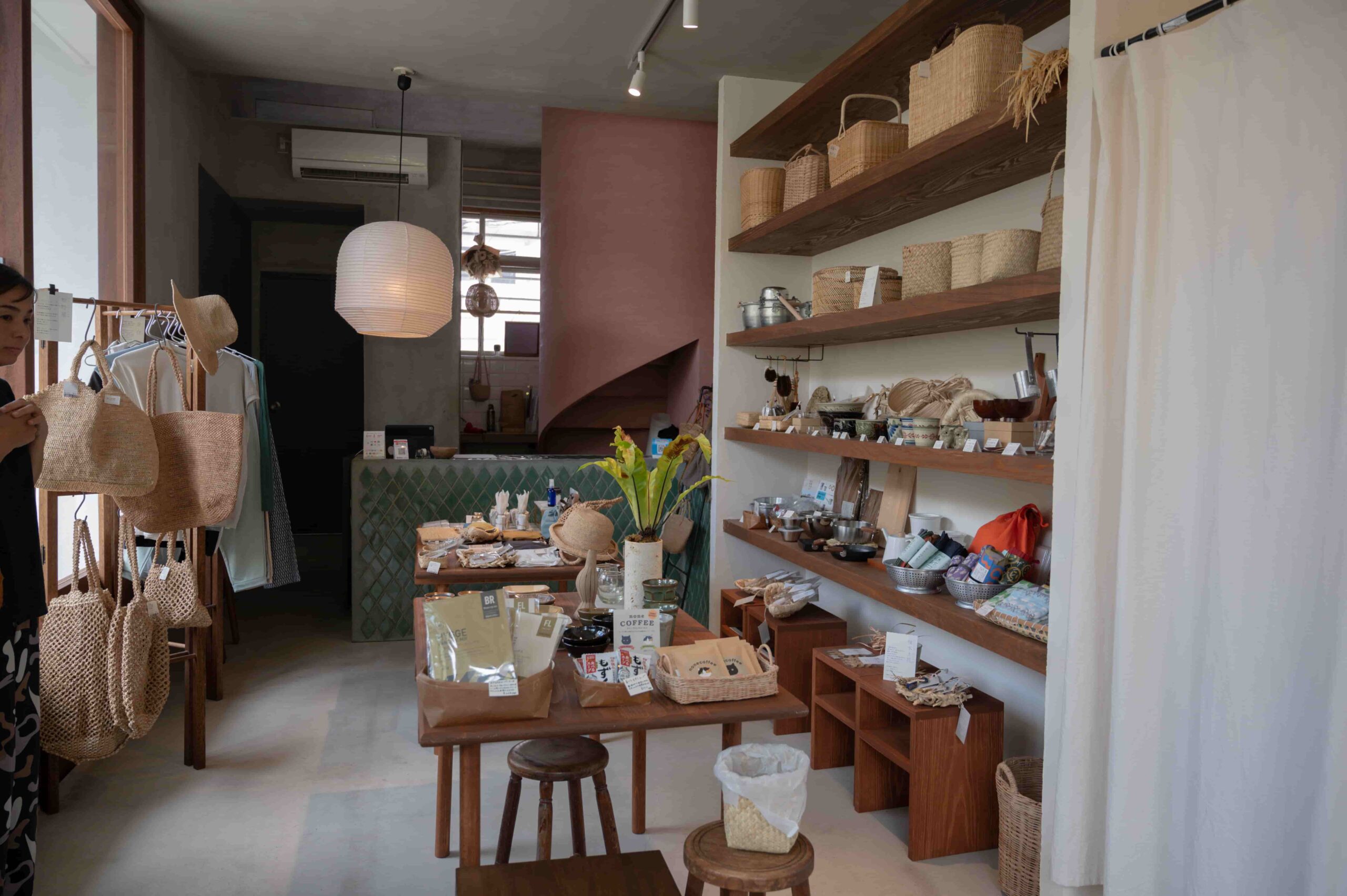
After seeing where the products end up on sale, we headed to the beginning of the pottery-making process by visiting Ikutouen’s workshop, where we spoke to craftsmen about how they make their products.
Pottery Making Process
The process of making pottery follows a few simple steps:
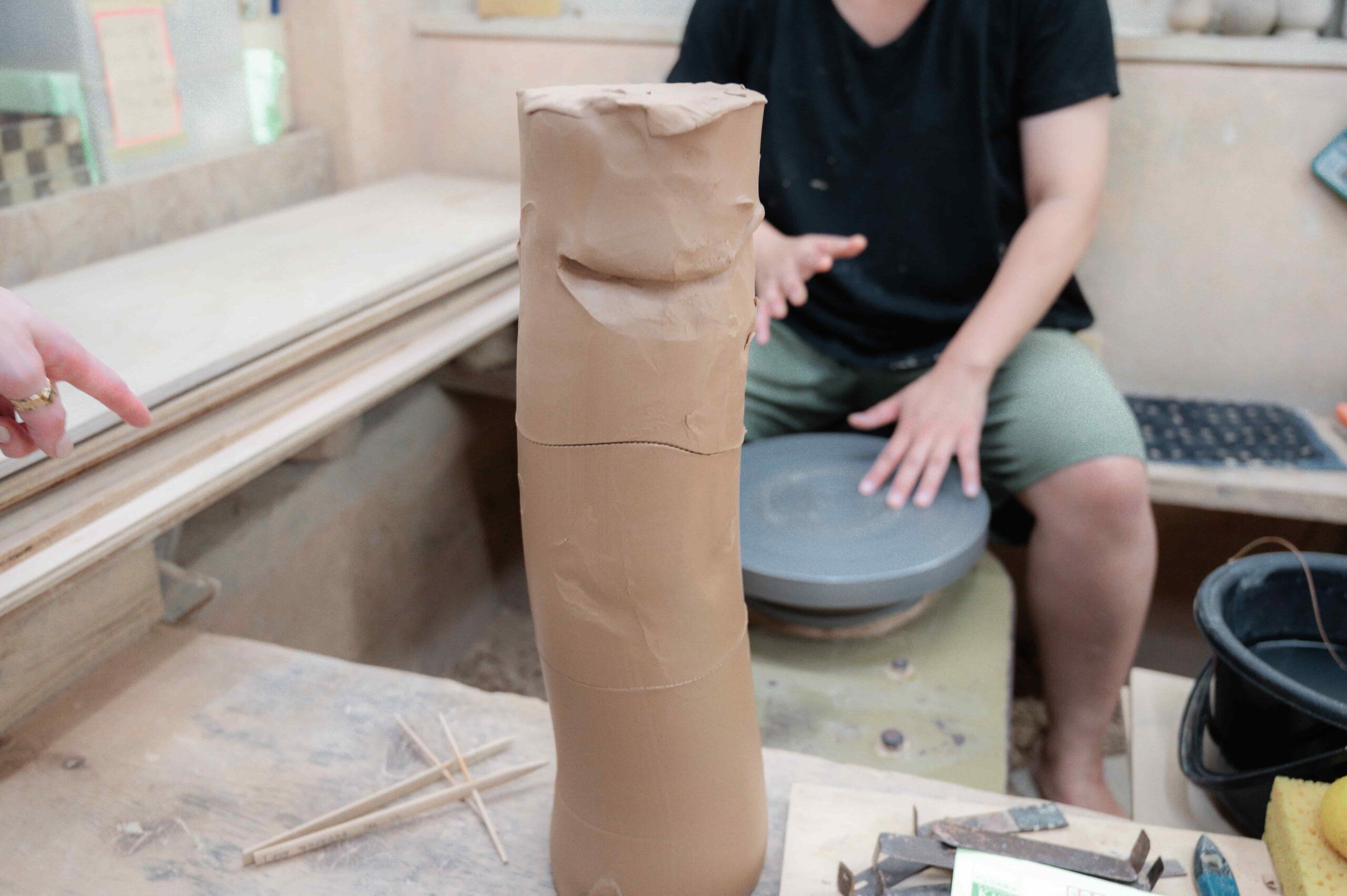
1. Decide which clay to use
The process of making the pottery depends on what type of clay is used, since red clay is courser and is often used for hand-building pottery and sculptural work while white clay is smoother and is more suited for high-quality ceramic art and delicate figurines. They are also fired at different temperatures, since red clay is fired at lower temperatures ranging from 1800 to 2100 degrees while white clay is fired at higher temperatures exceeding 2300 degrees. Tsuboya Ikutouen has multiple kilns that operate at different temperatures.
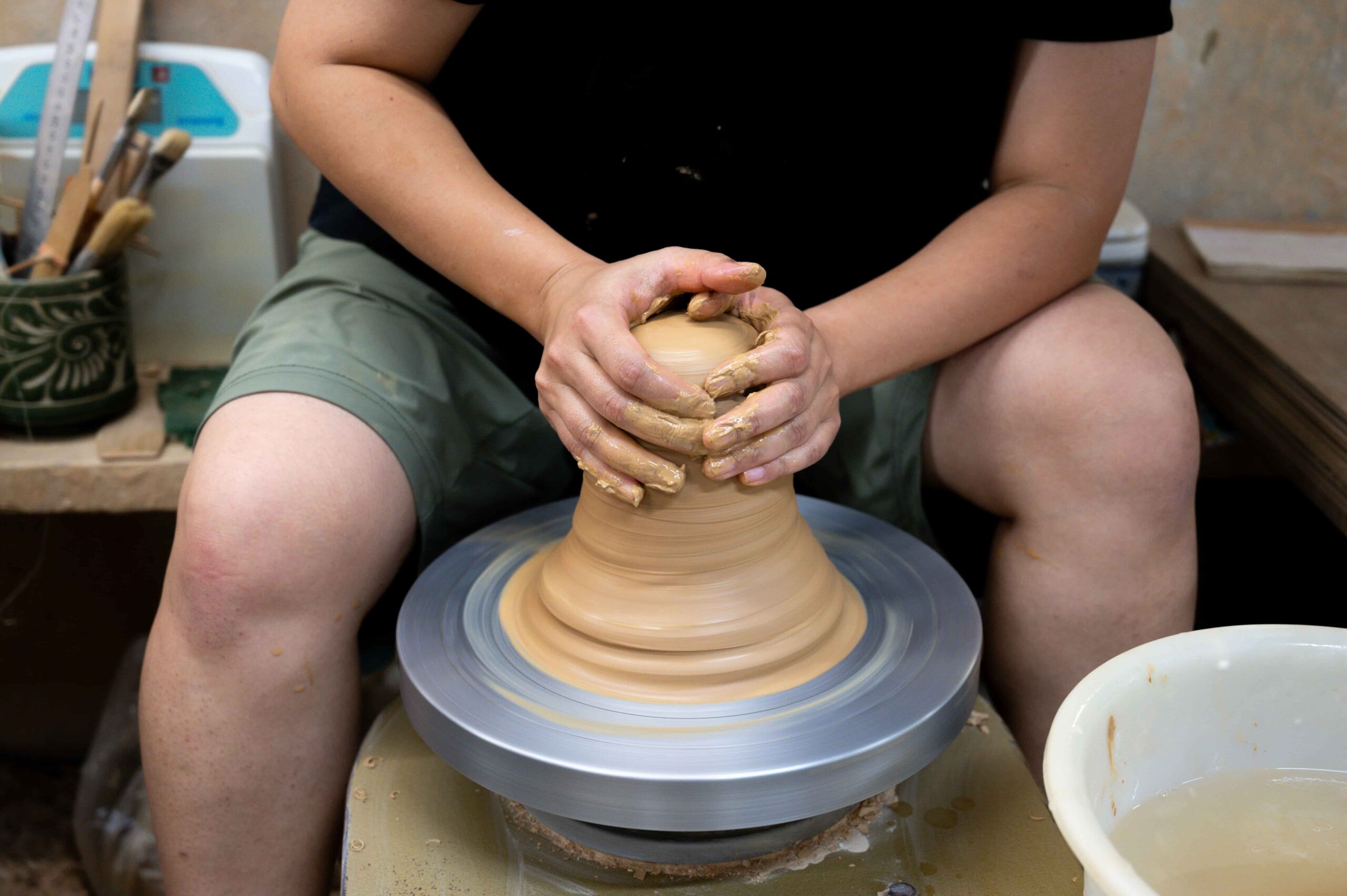
2. Mold it on the wheel (5-15 min. depending on the product)
Once the type of clay is selected, then the pottery is molded on the wheel, a process that takes 5 to 15 minutes depending on what kind of tableware is being made.
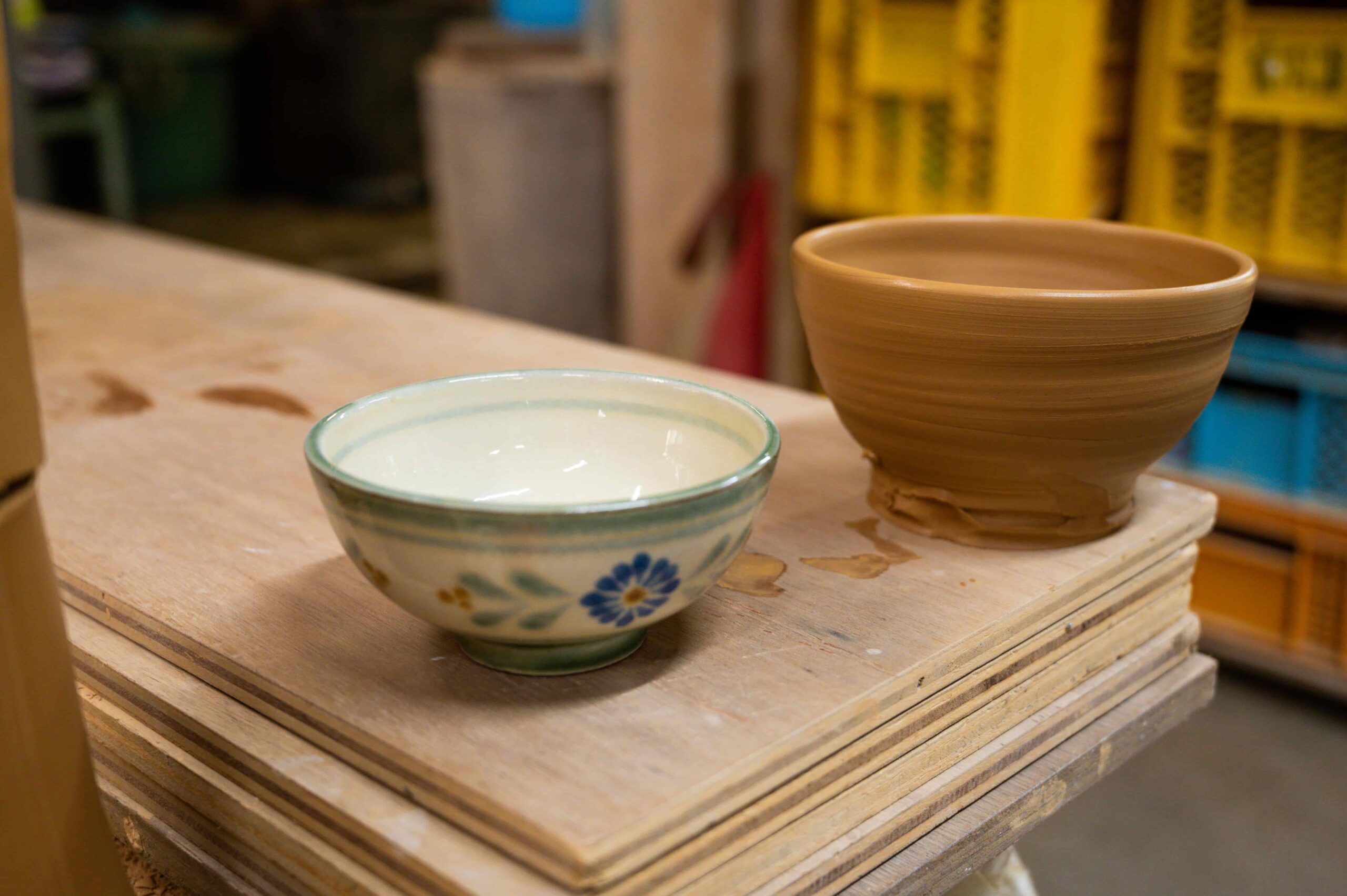
Before it is fired in the kiln it looks much larger than the final product.
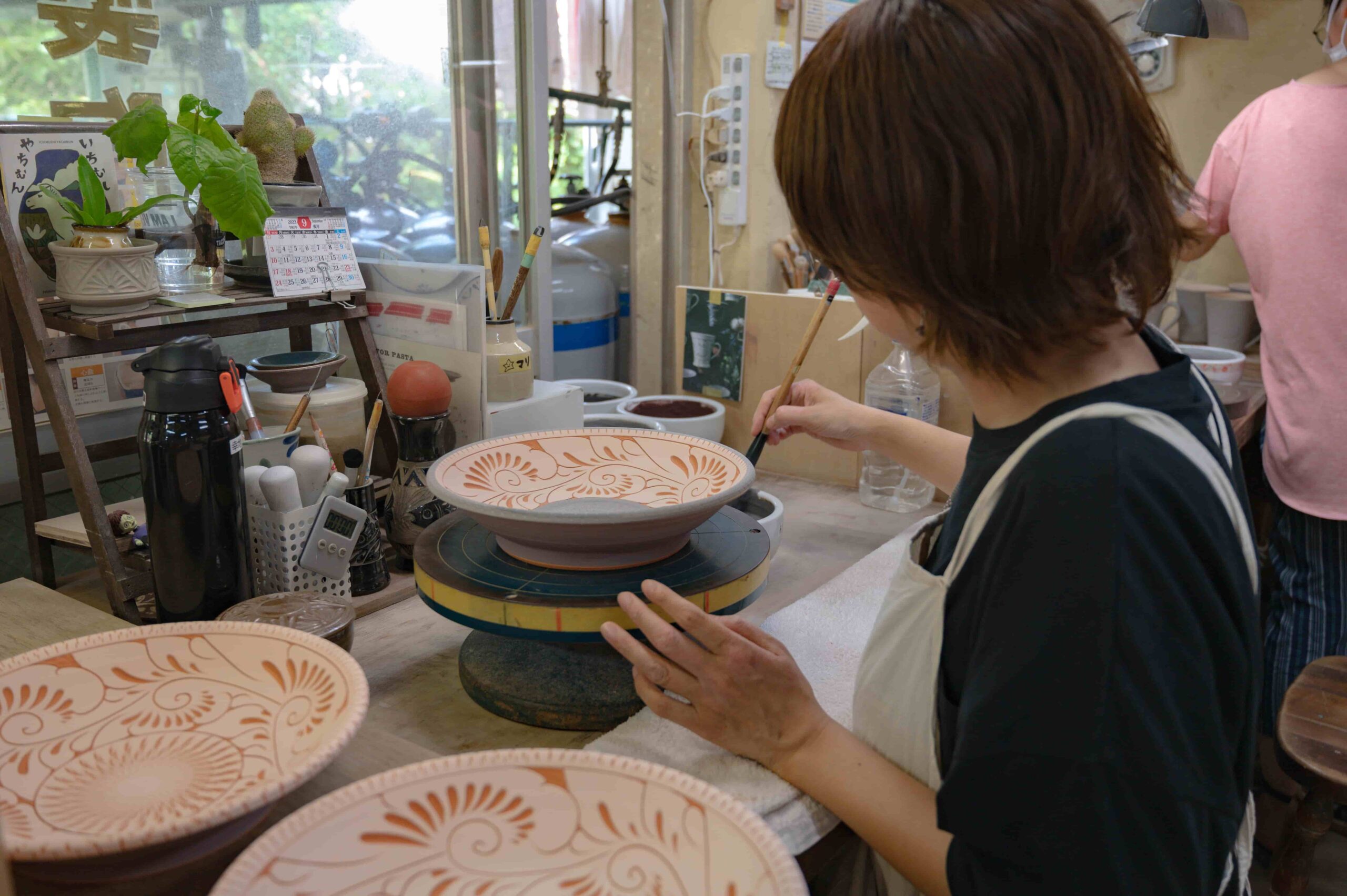
3. Add decorations
Okinawan pottery is known for its distinctive decoration styles and artists at Tsuboya Ikutouen use a variety of methods to embellish their pieces. Their pottery’s colorful glazes feature intricate patterns, often featuring motifs inspired by nature, such as waves, flowers, and fish. These patterns are meticulously painted by hand, requiring precision and creativity.

4. Fire it in the kiln
Firing is a crucial step in pottery-making. The pottery is placed in a kiln and the firing process is carefully controlled to achieve the desired finish. In Okinawan pottery, two types of firing are common: “yakishime,” which is a high-temperature unglazed firing, and “yohen,” which involves glazing and re-firing at lower temperatures. Each firing method imparts unique characteristics to the pottery.
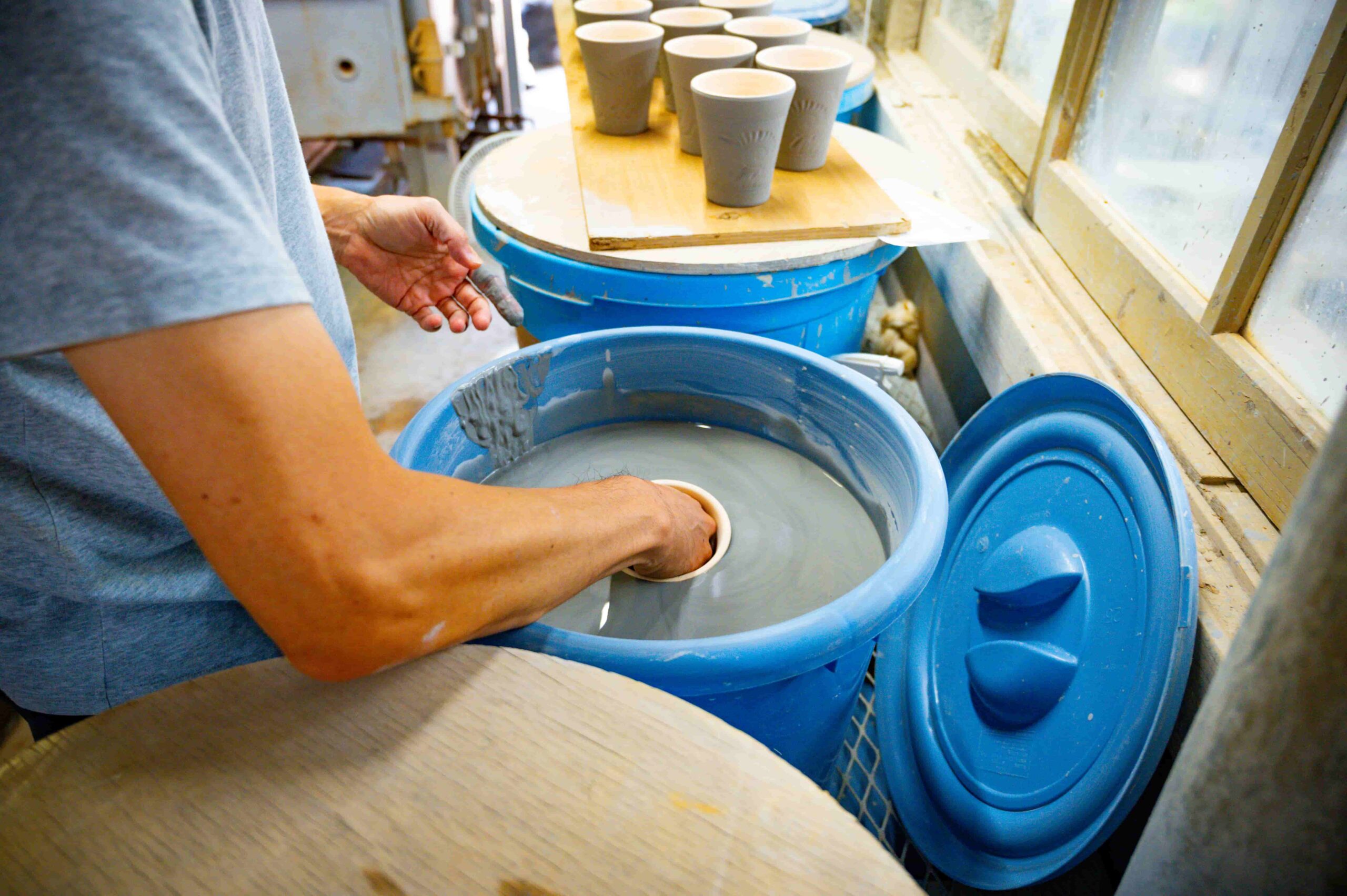
5. Glaze it if necessary
For pieces that require glazing, artisans apply a glaze made from local materials to enhance the pottery’s beauty and durability. The glaze can be clear or colored and it is carefully applied to achieve the desired effect.
6. Fire it in the kiln again
Depending on the oxygen flow of the kiln, the color of the pottery changes. The product is fired in the kiln until the desired color is achieved.
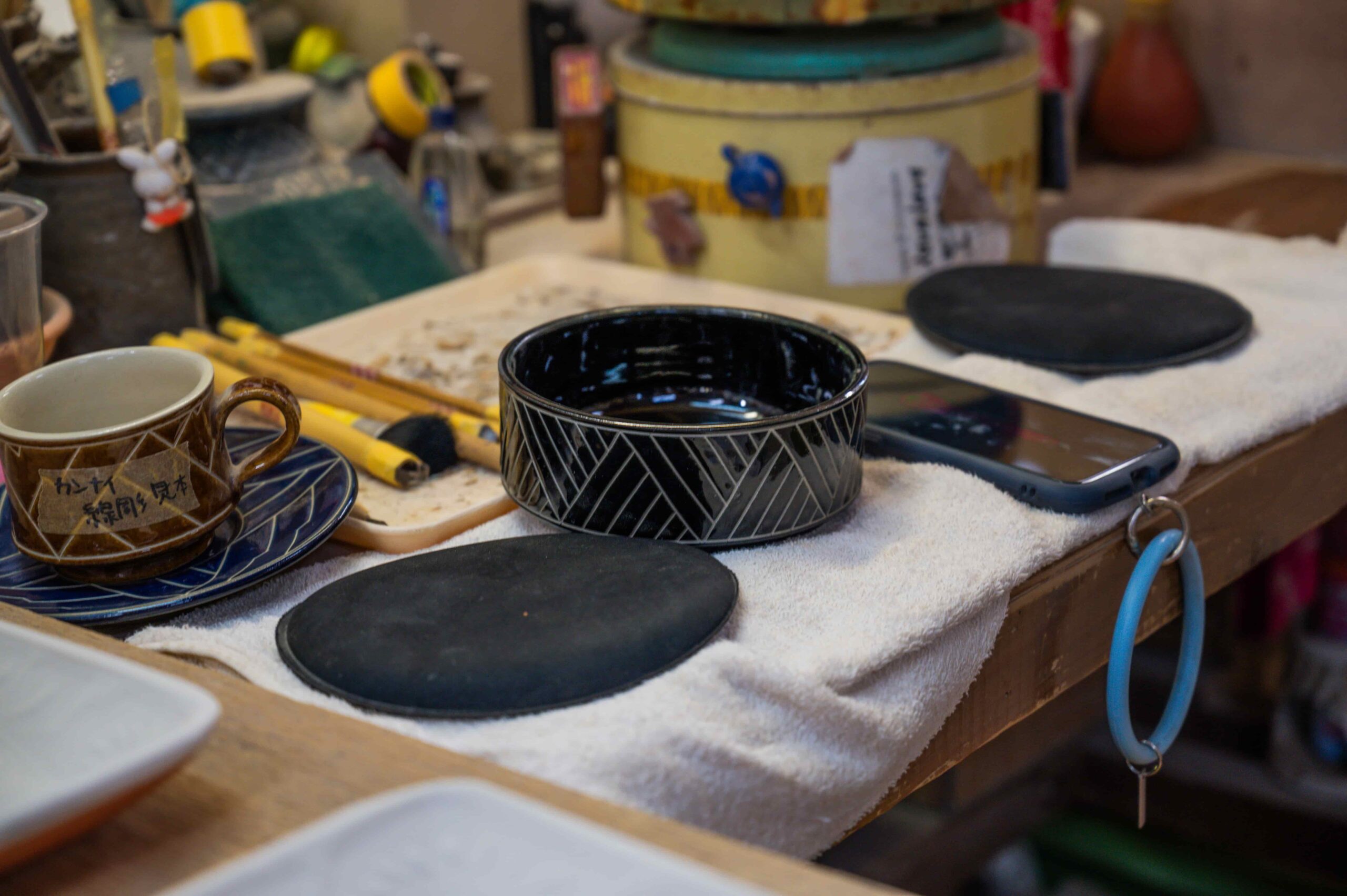
7. Fix the parts that are cracked or go over it with white clay
White clay is more rare and expensive and is used to add finishing touches. The pieces are polished to a smooth, glossy finish. This meticulous attention to detail ensures that each piece is of the highest quality.
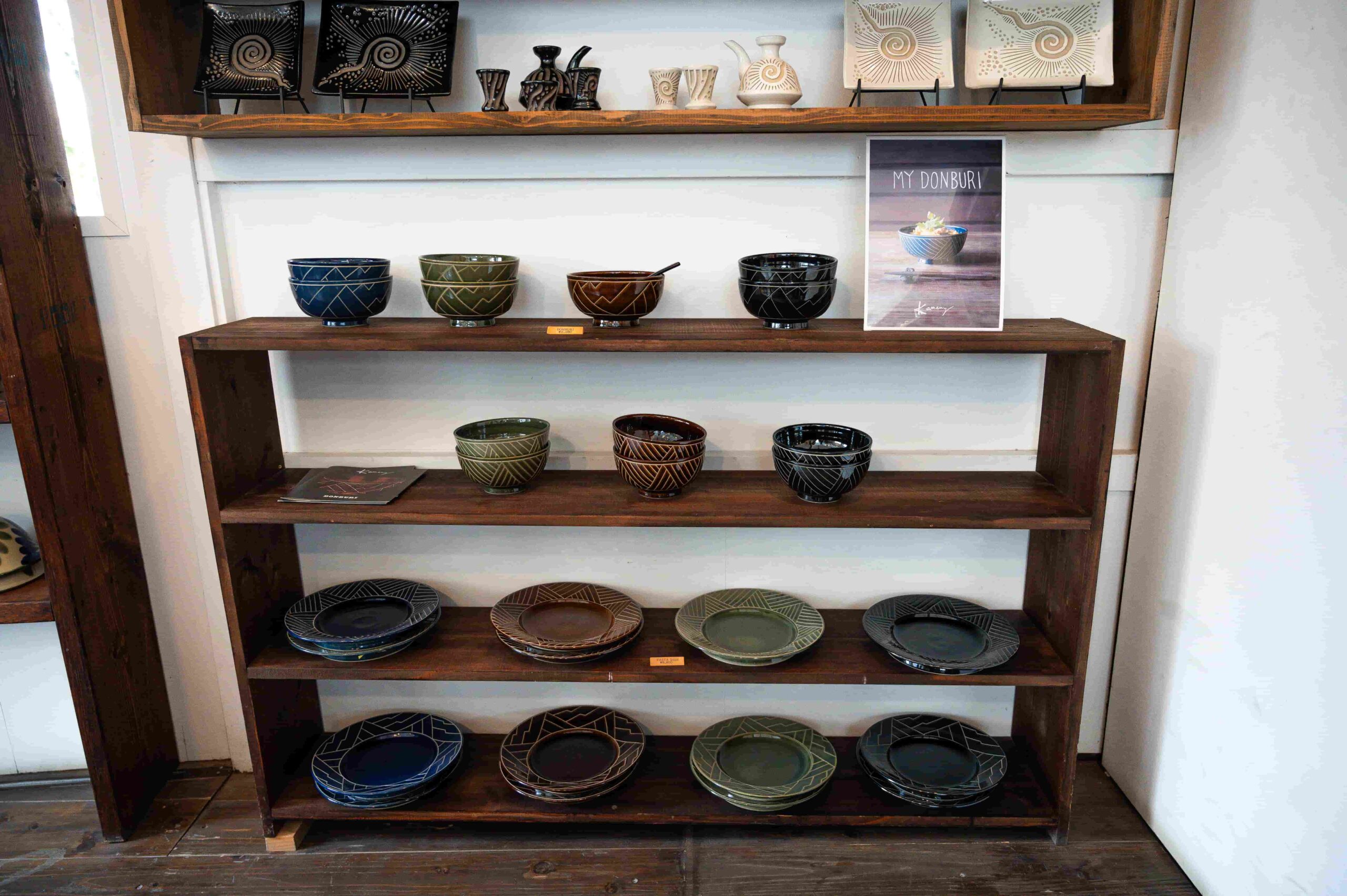
Tsuboya Ikutouen Pottery is dedicated to preserving the traditions of Okinawan pottery-making. They often host workshops and demonstrations, allowing visitors to experience the art form firsthand and learn about the cultural significance of this craft. You can make your own shisa at their dojo, which is about a 5-minute walk from the main Tsuboya Pottery Kiln Ikutouen.
In the end, the process of making pottery at Tsuboya Ikutouen Pottery is a labor-intensive and artistic endeavor that involves a deep connection to Okinawan culture and tradition. By visiting their shops or participating in their workshops, you can learn about the care and tradition that goes into creating these cherished cultural products. We hope you can spot their products featured at our hotel!

Experience Okinawa like never before at our urban resort hotel. Within walking distance to Kokusai Street, and just 5-min from Miebashi monorail station, which links to Naha Airport.
Click the button below to book your stay at ESTINATE HOTEL NAHA.

